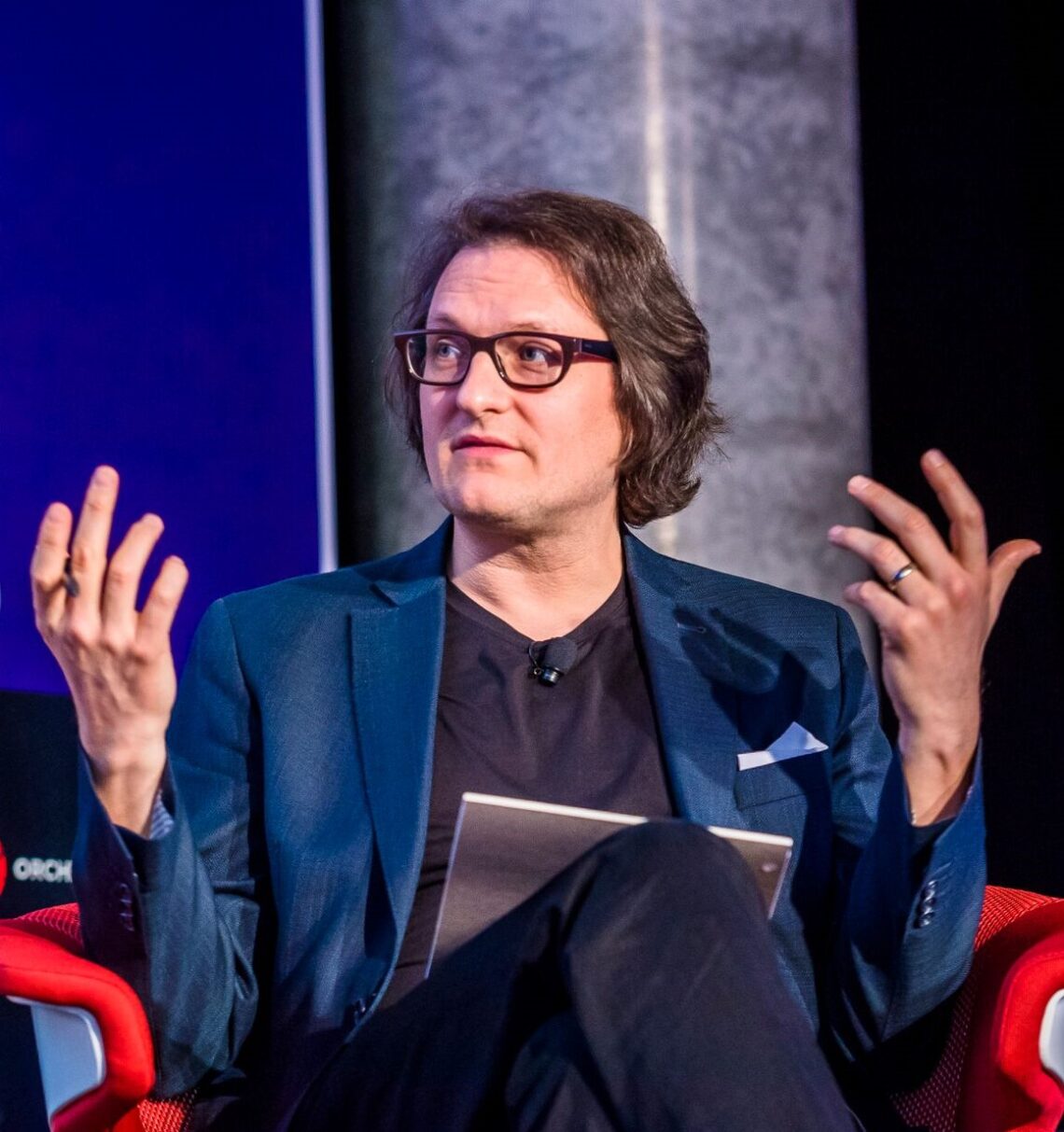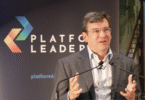Rob Wolcott is adjunct professor of innovation at the Booth School of Business, University of Chicago, and adjunct professor of executive education at the Kellogg School of Management, Northwestern University. He is co-author, along with Kaihan Krippendorff , of the new book Proximity, How Coming Breakthroughs in Just-in-Time Transform Business, Society, and Daily Life, which was published in May by Columbia University Press. Wolcott is co-founder and chair of TWIN Global (www.twinglobal.org), a global community of over 3,000 innovation leaders from over 30 countries and across sectors (business, government, the arts, academia, defense).
From 2009 – 2019, he served as clinical professor of innovation and entrepreneurship at Kellogg. Wolcott won Teacher of the Year from Kellogg’s EMBA program in 2013, 2014, 2015 and 2017. He is a board member of Clareo, a strategy consultancy focused on the global energy transition, resources, mining, food and agriculture industries; human transformation platform Abroad.io; and global non-profit HCP Cure Blindness (Himalayan Cataract Project). He is an advisory board member of Open Innovation Lab of Norway, MagicCube, StartupWind and other ventures and is an early-stage investor in nearly 30 companies and funds.His book, Grow From Within: Mastering Corporate Entrepreneurship and Innovation (McGraw-Hill, 2010) has been published in Chinese and Japanese. Wolcott’s work has appeared in publications such as MIT Sloan Management Review, strategy+business, The Harvard Business Review (online) and The Wall Street Journal.
Wolcott has a Bachelor of Arts degree in European and Chinese history; and an MS and a Ph.D. in industrial engineering and management science from Northwestern University. He recently spoke to The Innovator about his new book.
Q: Please explain the significance of proximity
RW: Around 2010 every speaker at every tech conference in the world was showing two slides: one on Moore’s Law [the observation that the number of transistors in an integrated circuit doubles about every two years] and another predicting that trillions of devices would be connected by 2025. I sat stewing in my chair thinking: Moore’s Law is great, but what’s next? What I noted was that digital technologies of all sorts allow us to compress capabilities into smaller packages and distribute them wherever and whenever they might add value. As a result, digital technologies push the production and provision of value (products, services, experiences) ever closer to the moment of demand in time and space. This is what Kaihan and I call proximity in our book. We are not talking about better supply chain management. We are talking about the kind of things that dramatically impact the production or the provision of products and services: how we work, eat, create and produce, prevent and cure. I will give you an example of prevent and cure. In 2004 my father died from an aneurysm. He had a full physical two months prior and his doctor told him ‘Keep it up. You are in great shape.’ In the future AI will be monitoring every aspect of our health, with AI interpreting weak signals, identifying health issues before they become problems. As such, proximity will compel healthcare to move from curing things to preventing things, as doing so will be more effective, far cheaper and always-on. Much of healthcare will disappear into our daily lives. This is just one example. Imagine a world where we can access anything, anywhere, anytime: a magical point where production and provision occur instantaneously with the moment of demand. We call this proximity=0 (or, P=0). Rapid advances toward P=0 characterizes what’s new about the Digital Age, compared to the Industrial Age.
Q: Can you give some other real-world examples?
RW: Bustanica, the world’s largest indoor vertical farm, formed a partnership with Emirates Airlines to grow greens for salads 30 minutes from the airport. They grow only what they need, where and when they need it. The experiment was so successful that in February Emirates Flight Catering acquired Emirates Bustanica, and its consumer brand Bustanica. Located near Al Maktoum International Airport in Dubai, Bustanica’s facility has the capacity to grow more than one million kilograms of quality leafy greens a year, equivalent to three tons daily, while using 95% less water than conventional agriculture. The key for widespread proximate agriculture will be distributed (proximate), economical, power generation and storage. As proximity manifests in power supply, proximate agriculture will be economically viable in more and more locations.
3D printing offers another example. While the industry has taken longer to scale than many had hoped, some companies have found true value-add applications. In its 2022 annual report Ford Motor company reported it 3D printed 200,000 automotive parts. Like all disruptive technologies, as companies discover economically viable applications for 3D printing, they’ll climb steep learning curves and eventually, over time, change the game.
If you are a product company and you depend on, for example, a single source supplier in Thailand and there is a tsunami, you are in trouble. Proximity technologies like 3D printing make you more resilient.
Getting the right drug to the right patient in a war zone is another example of how proximity transforms the model. In our book we tell the story of US Army Doctor Colonel Geoffrey Ling, M.D., who asked the question, ‘Could we produce the right drugs at small scale onsite, immediately where and when required?’ By recognizing that most drugs require a limited number of basic inputs, he and his team created a system the size of a small refrigerator capable of small-scale production of generic drugs, essentially a printer for pharmaceuticals. The US Food & Drug Administration has already validated that the drugs produced by Dr. Ling’s system are the same as you’d find in the pharmacy. The company built around the technology, OnDemand Pharmaceuticals, already has a first commercial implementation operating in Tupelo, Mississippi. Since going live in early 2024, the hospital system has experienced zero stock-outs of critical injectable drugs—for the first time in their history.
Q: You say on your book jacket that proximity represents an entirely new way to serve customers, with critical implications for corporate strategy, investing, public policy, supply chain resilience, and sustainability. Can you elaborate on some of those implications?
RW: There is so much in your question. Regarding strategy, companies are good at asking how a new technology can help them do a little better at what they already do. That’s not enough. We need to ask, “What can we do that we could never have done before?” The same is true for governments and policy makers.
Understanding proximity also helps you pose better challenges. Before Covid, I was speaking with the leadership team of a large bond rating company in the U.S. They were working hard to compress a critical client offering cycle time—the time when the client signs the contract to the moment they deliver—down from two months to two weeks. Unfortunately, that was the wrong objective. I challenged them, “What if you go through all of that effort, you succeed—and then soon after someone else shows they can do the same thing in two minutes. Now you’ve wasted all of those resources for nothing.”
One of the executives pointed out that, as a bond rating agency, “all we do is take data and analyze it. With AI and data analytics, eventually someone will be able to do this in a matter of minutes!” Fortunately, they changed their project focus and remained ahead of the game. The critical point to note is that this was entirely foreseeable. Not exactly how someone would create this value in minutes, but that AI and data analytics technologies would eventually be able to do so.
This is an example of proximity, bringing value creation ever closer to the moment of demand. Like in the bond rating example, you can often see it on the horizon. We can’t predict everything, but there are some things that we can be confident will happen. It’s the leader’s responsibility to build for the future rather than re-creating the past. All leaders must ask, what will proximity mean for my company, customers, citizens, even society.
Q: What is your advice to corporates?
RW: In the book, we provide a proximity strategy workbook in the appendix with exercises to help executives apply proximity to their industry and for their customers, current and future. For instance, we advise companies to take a product or service they currently have. Define the value customers get from that offering. Not the product or service itself, but the value they derive from it. Now, imagine it’s 25 years from now. How might that value be produced and provided at the precise moment of demand? By looking 25 years we’re helping people overcome constraints of what they think is possible today or in the near future. To not let reality get in the way of the exercise. After you’ve imagined how that future might look, then work backwards to today. You’ll start to have a picture for not only how your industry might transform over the coming decades, but you’ll also discover ideas relevant for the near term. Then you can go out and find technologies, partners, startups, capable of helping you advance toward that future.
A proximity revolution is underway across all industries. This is where things are going for the rest of our careers and beyond. Now you know.







